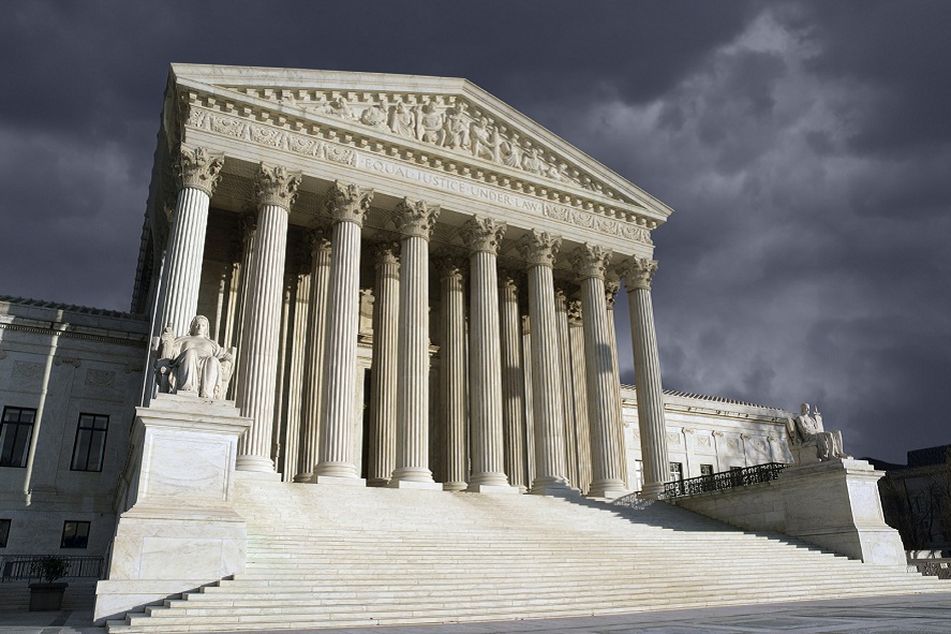Pivotal 401(k) fee lawsuit in front of Supreme Court means big changes for plan advisers

Regardless of how the high court rules, ongoing investment monitoring will be here to stay.
Oral arguments in a pivotal 401(k) lawsuit are being heard before the Supreme Court today, and regardless of the outcome, advisers can expect changes to the way they do business.
Tibble v. Edison International, a lawsuit initially filed in 2007 by plan participants against their employer, paved the way for litigation against plan sponsors for having excessively costly funds within a 401(k) plan.
At the center of the lawsuit is the plaintiffs’ claim that Edison had given plan participants a menu of 40 funds to choose from within the retirement plan. Six of those funds were retail share class funds, despite the availability of cheaper institutional share classes. In 2010, the U.S. District Court for the Central District of California granted a judgment of $370,732 in damages related to excessive fees in three of those retail share class funds, but the litigation over the remaining three funds moved to the 9th U.S. Circuit Court of Appeals and then the Supreme Court.
The defendants had claimed that the plaintiffs are subject to a statute of limitations that required them to file suit alleging a fiduciary breach within six years of the last action constituting the breach.
The issue before the Supreme Court centers on two legal questions. The one legal experts are highlighting is whether the six-year statute of limitations on fiduciary violations protects retirement plan fiduciaries from keeping imprudent investments that continue to cause losses if those funds were added more than six years ago.
Plan advisers and plan fiduciaries, however, should gird themselves for the shocker: Both parties in this suit say that fiduciaries have an ongoing duty to ensure the investments are prudent.
“Even [the defendants] say that you do have to go back and monitor if there is a significant change to a fund; the plaintiffs say that every year there is a new duty to monitor,” said Fred Reish, partner at Drinker Biddle Reath. “Essentially, that’s the fight. It’s a very technical one.”
NEVER OFF THE HOOK
“Given the position of the parties, it’s clear when the dust settles that fiduciaries have an ongoing and continuing duty of prudence that requires that they monitor the investments in the portfolio periodically,” said Ronald Mann, a writer for SCOTUS blog and a law professor at Columbia University.
Indeed, the brief filed by the defendants notes the following: “All agree that a fiduciary has an ongoing duty to monitor trust investments to ensure that they remain prudent. The only dispute even arguably at issue here concerns the scope of that duty and whether it was fulfilled by respondents’ quarterly reviews of the lineup options.”
In a practical sense, this case reinforces to advisers and plan fiduciaries that funds aren’t merely selected and forgotten. “Fiduciaries need to monitor and look at the investments each year to see if there are changes and are they appropriate for the plan,” said Mr. Reish said.
That review should be expanded to include grandfathered options that predate the fiduciary who is now overseeing the plan. Don’t wait for the case to resolve. Go and review that lineup.
“If something is old and cold in the lineup and you haven’t looked at it in a while: Is it prudent? Is it best practices if we have this [fund] and it’s grandfathered?” Marcia Wagner, managing director at the Wagner Law Group, asked. “That’s not prudent. Take a look at the lineup and clean it up once a year. For small plans, once every two years. Don’t rely on the statute of limitations argument.”
Ms. Wagner added that if an employee in a retirement plan just has to have a particular investment option available — and that fund is imprudent and hasn’t been evaluated in a while — then perhaps he should have a brokerage window where he can invest more widely. But be sure to pluck that imprudent fund from the plan menu, so it isn’t available to everyone else.
“That might be a way to let someone invest in something that is untouchable in the plan,” she said. “Don’t keep it around for everyone to invest in if it isn’t prudent and hasn’t been looked at in a long time.”
COSTLY SHARE CLASSES
The second question the Tibble case is considering is whether that statute of limitations applies in cases where a plan fiduciary breached its duty of prudence by offering higher-cost retail class mutual funds to a plan even if identical lower-cost institutional class investments were available.
How the Supreme Court tackles the issue of retail share classes versus institutional share classes is especially important to small retirement plans and the advisers who serve them. Those plans generally don’t have the assets needed to buy institutional share classes, and vendors are interested in working with that corner of the plan market because of the 12b-1 fees and other expenses related to retail funds, Ms. Wagner said.
Mutual funds with revenue sharing often help carry the administrative cost of the smaller plans, and fiduciaries need to consider that when they choose funds for the menu. Revenue sharing that goes toward recordkeeping and other services needs to be reasonable.
“If one share class is a little more expensive than the other, but it pays revenue sharing that’s equal to or greater than the difference, and it pays for the cost of the plan, I think most courts will say that that’s fine,” Mr. Reish said.
Ms. Wagner predicted that there could be significant disruption in the small-plan market, depending on where the court goes on retail mutual fund fees. Innovation to offer lower-cost structures should follow.
EMPHASIS ON EDUCATION
Education is in order for advisers when it comes to examining investment options. Not only does this mean advisers need to familiarize employers with the different share classes, but they also need to understand group annuity contracts and their different classes of separate accounts. The same goes for collective investment trusts.
“Educate the fiduciaries on the share classes,” Mr. Reish said. “Fiduciaries must understand and document the share class they have and why it’s proper.”
DON’T FORGET STABLE VALUE
Advisers may prefer to back away from stable value funds if they’re already grandfathered, but these also need to be a part of the ongoing monitoring and review process.
“There are different classes of stable value funds and guaranteed contracts from insurance companies,” Mr. Reish said. “They have different investment structures and different classes that are similar to share classes.”
Plan sponsors and participants need to understand their stable value funds: If it’s conservative with a low rate, then they need to be aware. If it promises a higher return but with greater risk, then that also needs to be communicated. There are costly repercussions for imprudently managing a stable value fund.
“Fiduciaries may not really understand which [stable value fund] they have, and it’s not being accurately communicated to the participants,” Mr. Reish added. “Regardless, for the fiduciary adviser, that’s in the scope of their duties; it’s their responsibility to communicate it.”
Learn more about reprints and licensing for this article.






